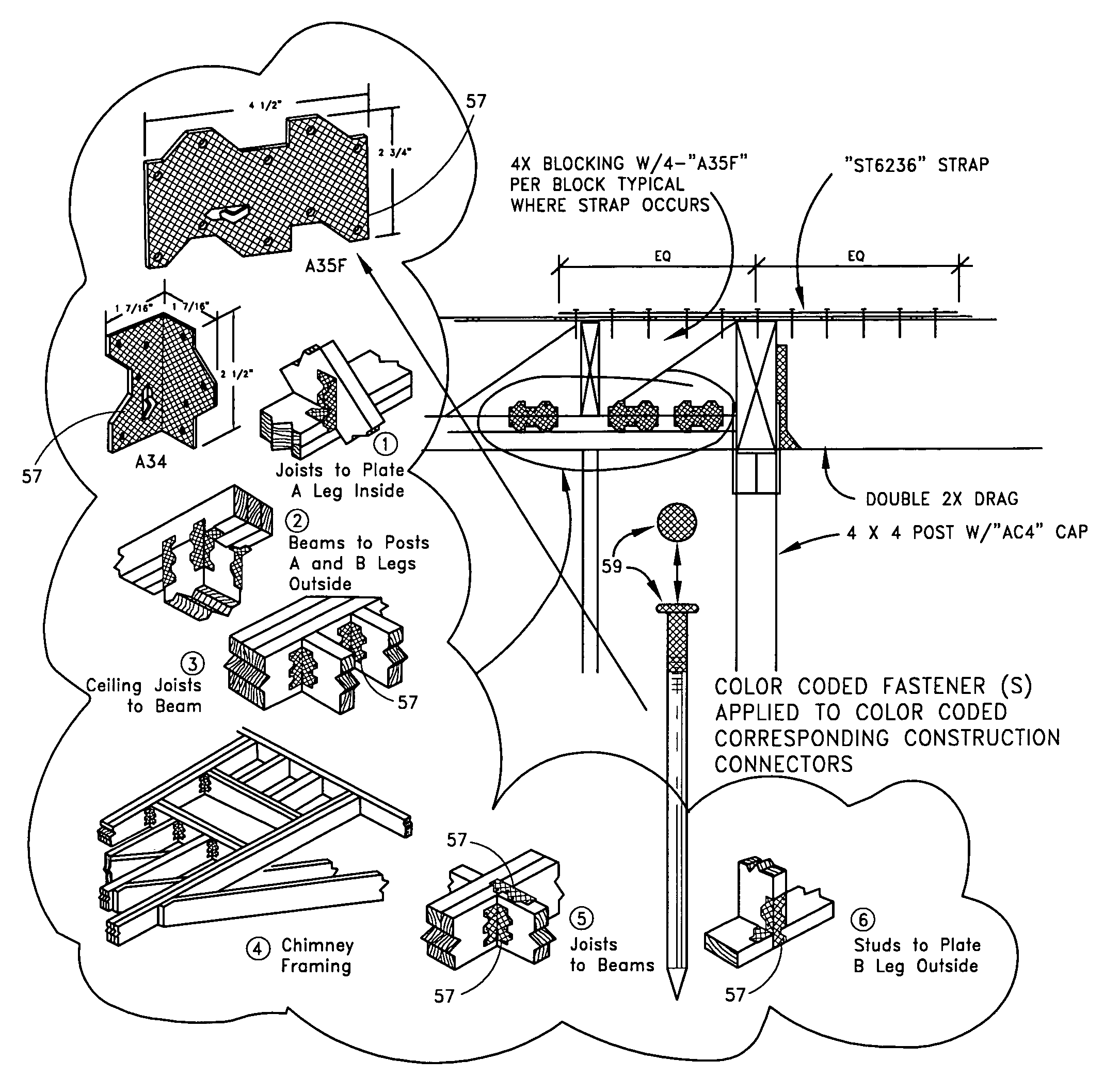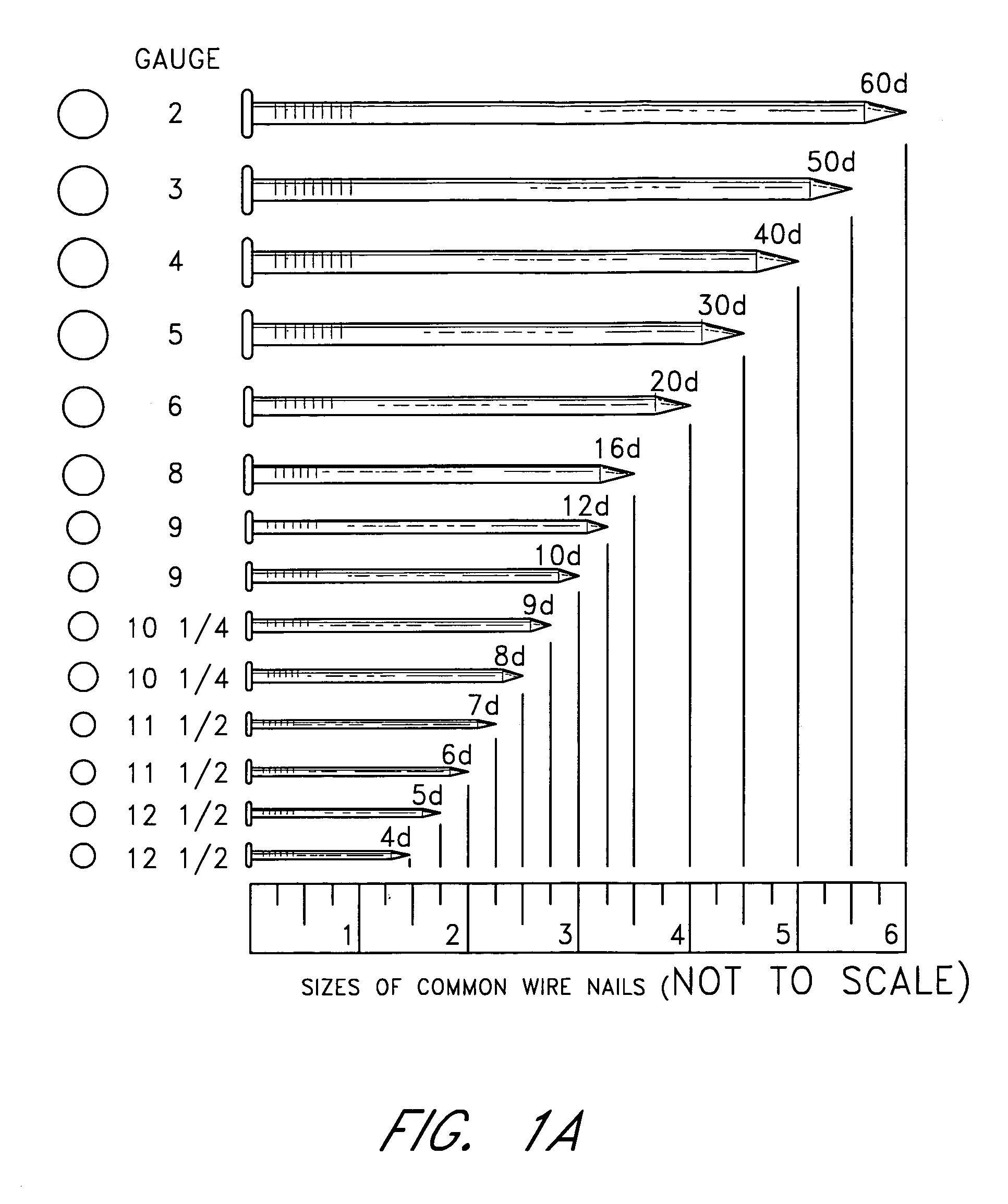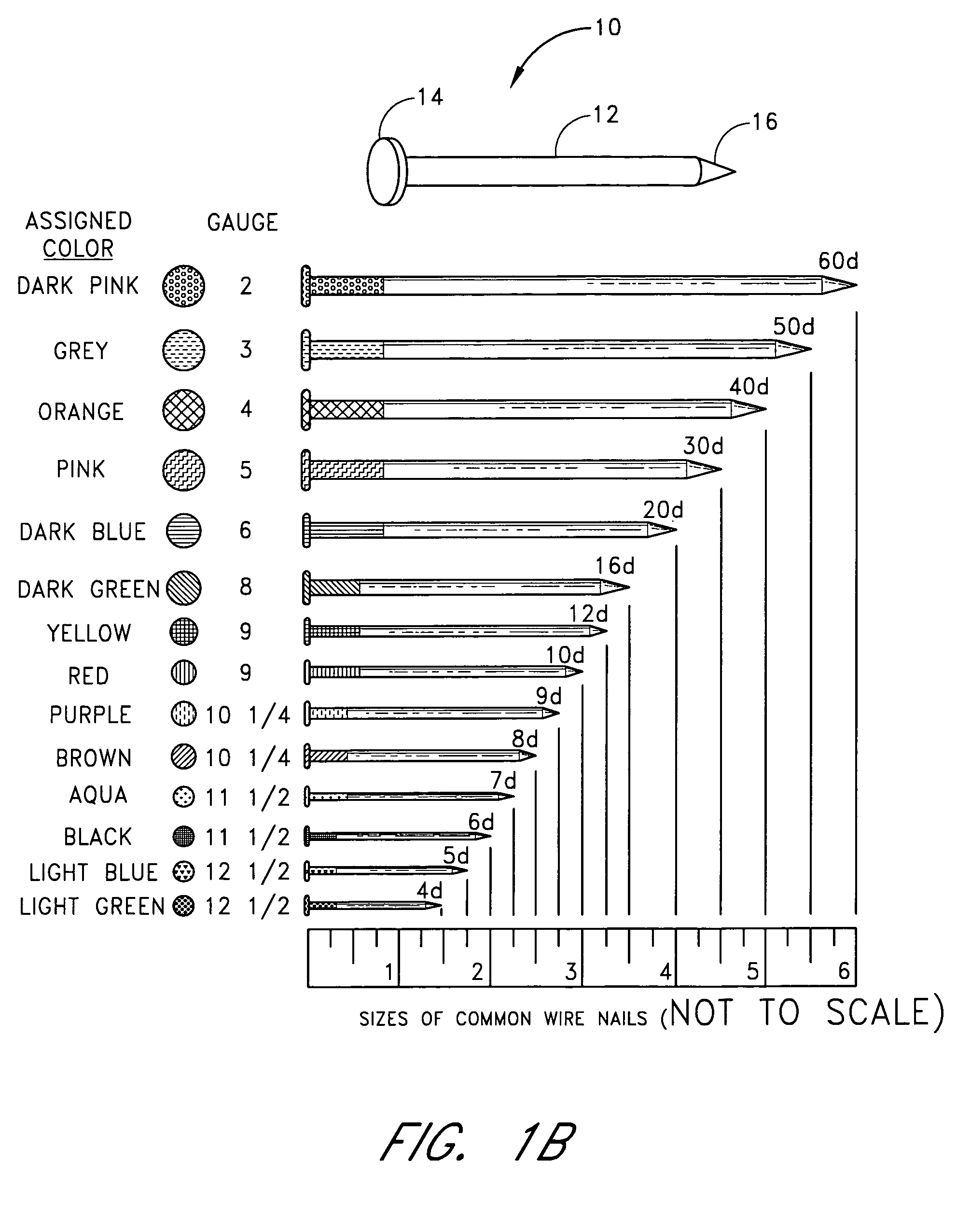Categorizing fasteners and construction connectors using visual identifiers
a technology of visual identification and construction connectors, applied in the field of color coding systems, can solve the problems of increasing production costs, exposing the builder or developer to the liability of the buyer, and delays in construction, so as to reduce the time required to make, increase the accuracy of determining, and reduce the effect of identifying
- Summary
- Abstract
- Description
- Claims
- Application Information
AI Technical Summary
Benefits of technology
Problems solved by technology
Method used
Image
Examples
Embodiment Construction
[0036]Reference will now be made in detail to the preferred embodiments of the invention, examples of which are illustrated in the accompanying drawings. While the invention will be described in conjunction with the preferred embodiments, it will be understood that they are not intended to limit the invention to those embodiments. On the contrary, the invention is intended to cover alternatives, modifications and equivalents, which may be included within the spirit and scope of the invention as defined by the appended claims.
[0037]The focus of the entire construction industry is quality control. The architectural blueprints define the materials that must be used in the structure, and the appropriate materials / fasteners / connectors to use to comply with building codes. Consequently, everything must be built as the blueprints specify. When this is done, the resulting structure will be safer, and the builder will not incur additional expenses to bring the structure to code, or as a resu...
PUM
 Login to View More
Login to View More Abstract
Description
Claims
Application Information
 Login to View More
Login to View More - R&D
- Intellectual Property
- Life Sciences
- Materials
- Tech Scout
- Unparalleled Data Quality
- Higher Quality Content
- 60% Fewer Hallucinations
Browse by: Latest US Patents, China's latest patents, Technical Efficacy Thesaurus, Application Domain, Technology Topic, Popular Technical Reports.
© 2025 PatSnap. All rights reserved.Legal|Privacy policy|Modern Slavery Act Transparency Statement|Sitemap|About US| Contact US: help@patsnap.com



